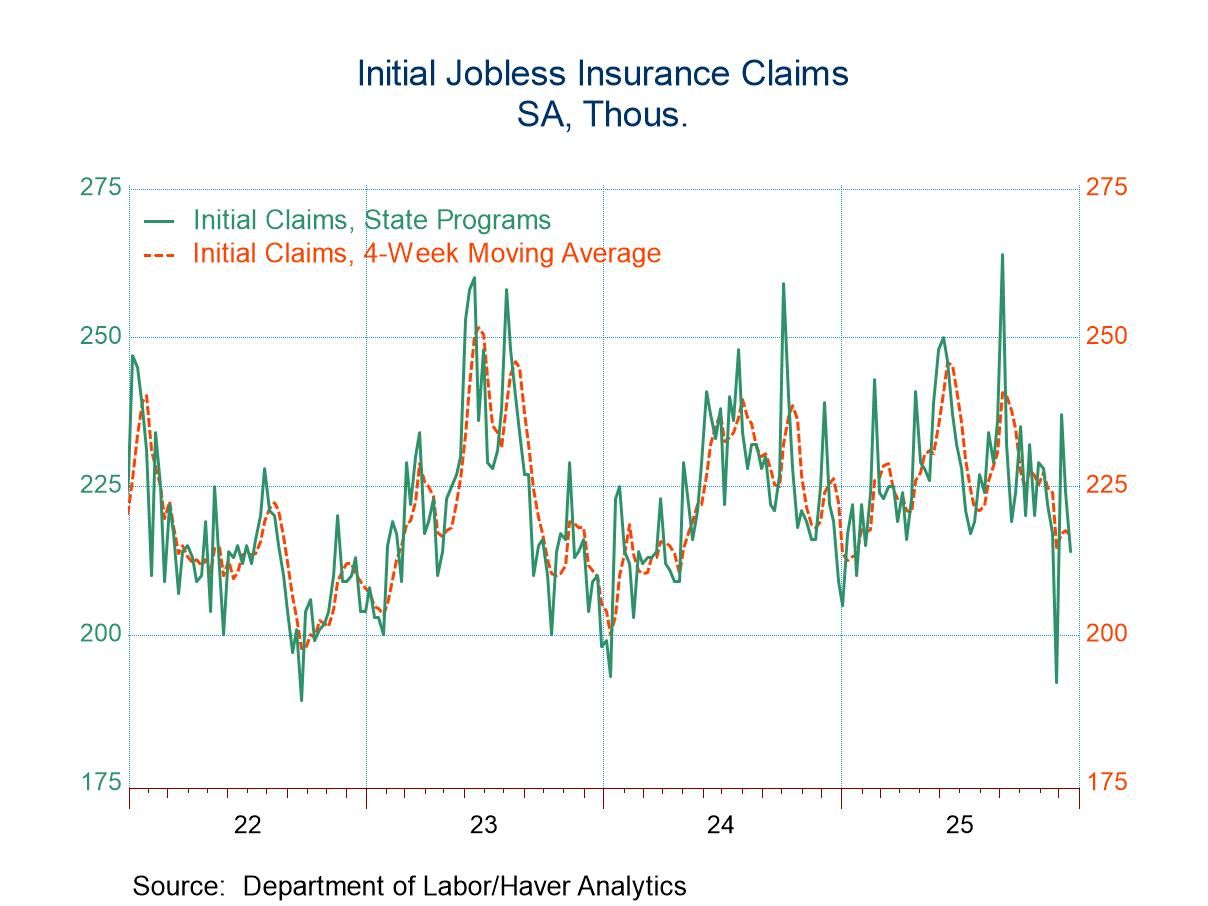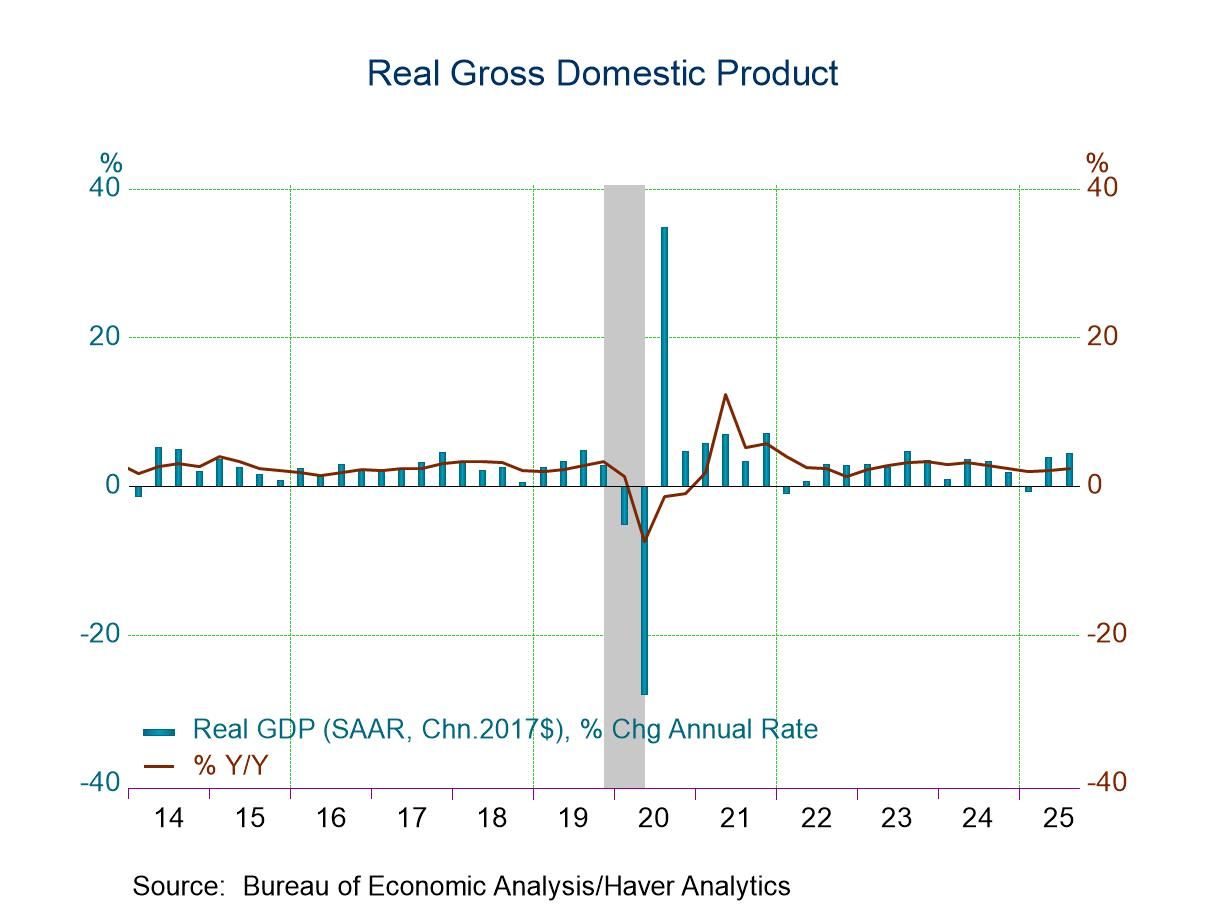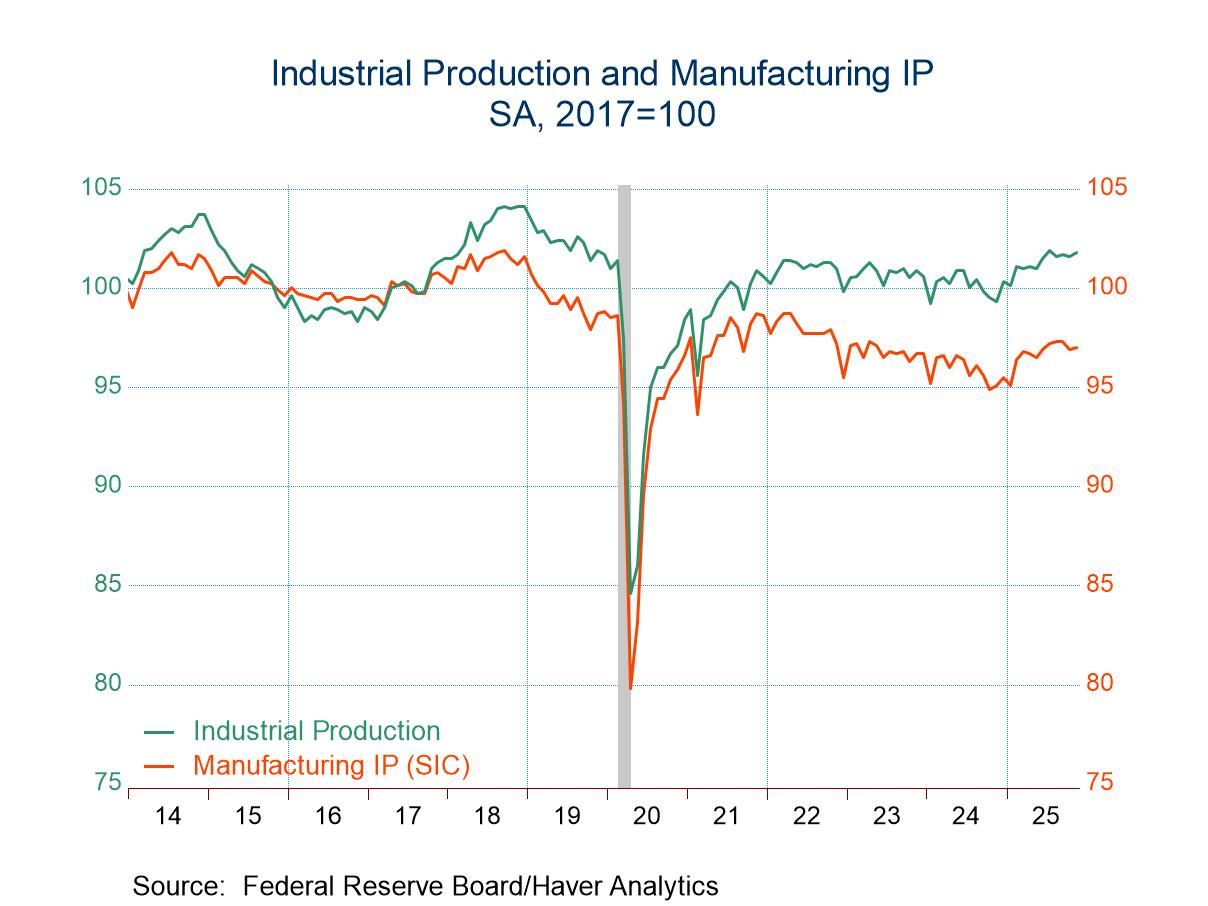EMU PMIs Wither in March; Mixed Bag Elsewhere

PMIs in Europe are weakened on balance in March. The Composite Index for the EMU fell in March, driven lower by weaker conditions in manufacturing and in services. Germany had weaker conditions in March driven lower by weaker conditions in manufacturing and in services. France breaks the model of the EMU member with a stronger index overall boosted by strengthened services as the manufacturing was weaker on the month. The U.K. was weaker overall despite having a stronger service sector; its weakness was created by a weaker manufacturing sector. Japan saw strengthening across the board for its composite, manufacturing, and services as did the U.S. The U.K. has the strongest composite standing on the month, but the U.S. has the most uniform strong stands across sectors- the best balance. Japan is the weakest.
Sequential changes in lagged averages Looking at the sequential changes over 12 months over six months and over three months (calculated on one-month lagged averages that ignore preliminary data), those averages show that over 12 months all the indicators are stronger than they were twelve months ago. This applies to the composite, the indexes for manufacturing and services in each of the survey respondents. Over six months compared to 12 months, conditions are somewhat uneven. Japan shows strength across the board: for manufacturing, services and the composite. However, the U.K., Germany and the EMU show weaker conditions across the board. France shows mixed performance over six months as does the U.S. Over three months compared to six months, weakness prevails. However, manufacturing is stronger compared to six months in Japan, the U.K., France, and Germany. But manufacturing still weakens over three months compared to six months for the European Monetary Union as a whole- all EMU PMIs weaker over three months. The U.S. also shows a weaker composite and weaker components over three months on average data.
Queue standings compared The queue standings show the positioning of the composite indexes on data back to 2018. Readings are mostly upper mid-stream. There's a 72.5 percentile standing in the EMU, for Germany it's a 66.7 percentile standing, France is a bit stronger at the 78.4 percentile mark, the U.K. at 88.2 percentile. Japan, however, is weak with a 41.2 percentile composite. The U.S. composite stands at 82.4%. Manufacturing sector standings are all in the 60th to low 70th percentile except Japan at 82.4% and the U.S. at 80.4%. Services sector standings are firm-to-strong with the EMU clocking 72.5%, Germany at 68.6%, France has a stronger 84.3%, the U.K. has an even stronger 94.1%. Japan’s service sector is below its median at a 41.2 percentile. The U.S. logs an 86.3 percentile standing.
A narrow range houses most estimates Despite considerable country differences, the average composite reading for EMU members and Japan is 69.4%, the average manufacturing rating is 70.6%, and the average services reading is 72.2%. These standings are all clustered in the upper midrange (low 70th percentile for the most part) indicating overall firm conditions. However, as the table shows there are some clear differences among members. And in comparison, all the U.S. ranks are in their 80th percentile.
Month-to-month and three-month patterns for unaveraged PMI diffusion indexes The month-to-month changes are concentrated with declines in Europe, and some rebound in the U.S. and Japan. Still, Japan tends to lag the PMI levels achieved in Europe (except for manufacturing). Over three months, composite conditions improve everywhere except Japan. All show a weaker manufacturing sector except France that is unchanged and the U.S. that shows an increase. The service sector advances everywhere over three months except in Japan.
Japan is the weakest On theses timelines, only Japan post PMI readings below 50. Its composite PMI for March is 49.3, and its service sector PMI is 48.7. Japan’s composite and service sector PMIs are below 50 in March, February and January, showing outright declines in activity for these sectors in each month. In addition, Japan’s composite PMI averages a below 50 PMI reading over three months and 12 months while services show and average reading below 50 on all horizons, three-months, six-months, and 12-months. Still, Japan’s manufacturing sector registers steady expansion. Japan is suffering from the ills in China, its largest trading partner, where growth has slowed and where a zero-Covid policy continues to impede economic activity. The virus has also been an ongoing issue in Japan that has impacted services.

Robert Brusca
AuthorMore in Author Profile »Robert A. Brusca is Chief Economist of Fact and Opinion Economics, a consulting firm he founded in Manhattan. He has been an economist on Wall Street for over 25 years. He has visited central banking and large institutional clients in over 30 countries in his career as an economist. Mr. Brusca was a Divisional Research Chief at the Federal Reserve Bank of NY (Chief of the International Financial markets Division), a Fed Watcher at Irving Trust and Chief Economist at Nikko Securities International. He is widely quoted and appears in various media. Mr. Brusca holds an MA and Ph.D. in economics from Michigan State University and a BA in Economics from the University of Michigan. His research pursues his strong interests in non aligned policy economics as well as international economics. FAO Economics’ research targets investors to assist them in making better investment decisions in stocks, bonds and in a variety of international assets. The company does not manage money and has no conflicts in giving economic advice.






